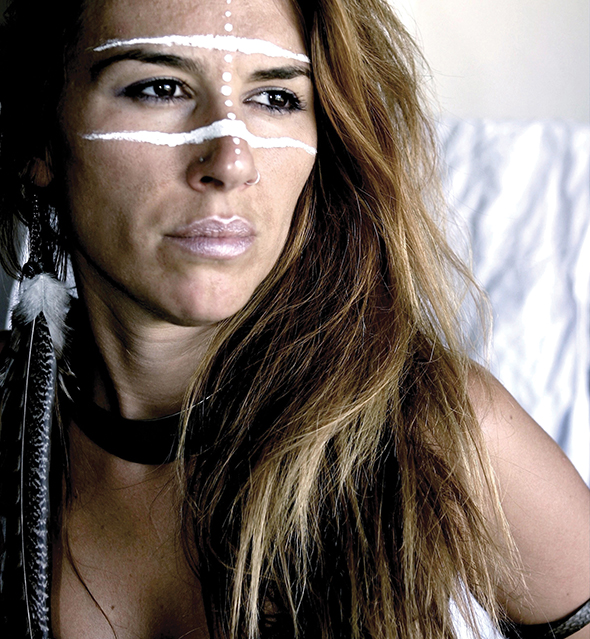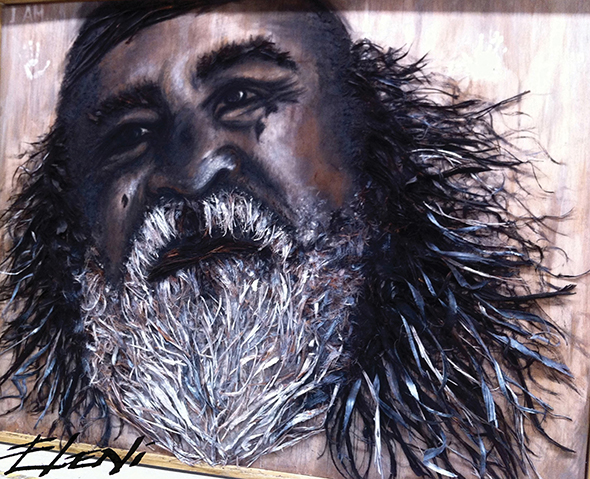
Australian artist Helen Andronis Ibrahim – who uses her Greek name, Eleni, to sign her art – travels among Indigenous people in Australia and the Native American Hopi in Arizona to pursue an art that is a reflection of what it means to be connected to this earth and also a narrative of her personal journey. Ibrahim says she has always had a connection to all Indigenous cultures especially when she’s painting.
In 2011 she painted an iconic image of an Aboriginal Elder who died in May 2015. His first name cannot be mentioned or written down during the mourning period as Aboriginal tradition dictates that a dead person’s name cannot be said as this would recall or disturb their spirit.
Ibrahim refers to him as “Uncle” and, while many cannot say his name, her extraordinary portrait, which she named “I AM”, captures a voice and spirit that cannot be silenced. Soil, bark, feathers, sticks, charcoal, and acrylic paint are mixed together to compliment the balance of earth tones and vibrant hues.
Between the 1800s and 1970, many Indigenous children in Australia were forcibly removed from their families as a result of various government policies — most of them based on the ideology of assimilation. They became known as the Stolen Generations. These actions left a legacy of trauma and loss that continues to affect Indigenous communities and individuals today. The subject of “I AM” was one of those children.
Ibrahim’s earth-to-canvas technique captures the voice of Australia’s Stolen Generation, none more than “I AM.” The portrait has been celebrated by galleries in Australia and New York and the SeeMe Gallery in New York selected it to mask an entire 25-storey building in the middle of Times Square for eight weeks.
Helen Andronis Ibrahim talks to SOMA about her art and creative goal:
Who is “Uncle”?
Uncle was a teacher and leader for Indigenous land rights, education, community development and cultural awareness. He was a bridge between cultures and world nations, creating an understanding so Indigenous and non-Indigenous people can live and learn together, heal the past through shared experience in the present.
How did you first meet him?
It was at one of his documentary gatherings. I felt this deep connection and closeness to his words, his kindness, and the love he had for his land, culture and humanity. He was truly one of the most incredible and gentle human beings I have ever met in my life.

How is your art close to Aboriginal art?
My work is not Indigenous Art. It’s my style of art. It’s what comes from my heart. My work represents the connection I have to the land and all of its beauty. And that’s what I love about Indigenous cultures. I feel that connection and paint it on canvas the best way I know.
What did Uncle think of the painting?
He absolutely loved it.
What can you tell readers about the true significance of the Aboriginal people and why it’s important to keep their voices alive?
It’s so important to keep their voices alive along with all Indigenous tribes on the planet. My creative goal is to bring Indigenous energy into our lives the best way I know how. I wish to continue that process throughout my work, which will hopefully enable our community to appreciate Indigenous culture and heritage all over the world. For many years that knowledge has been neglected.
I am an artist and I paint what is true to my soul.
Text by ELLEN georgiou

